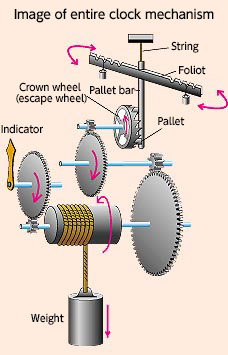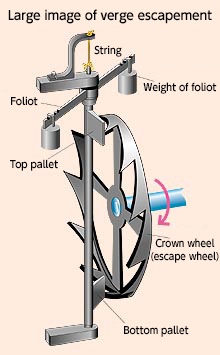The Beginning of Mechanical Clocks
Because sundials need sunshine to measure time, clocks using water and sand, as well as clocks to measure time by combusting kerosene and seeing the decreased kerosene volume were created, but their reliability was low. Therefore, people invented a mechanical clock that requires no fluids such as water and sand.
Around 1300, a clock that shows time by regularly rotating a gear mechanism driven by weights through an escapement mechanism consisting of the foliot and a crown wheel (that rotates a gear intermittently) was devised. These clocks were installed in towers of churches and other buildings, marking the beginning of an era of mechanical clocks.
In Italy Galileo Galilei discovered the isochronism of pendulums around 1582 and the Dutch Christiaan Huygens invented a pendulum clock around 1656. These improved the accuracy of clocks remarkably and the technology was leveraged in the next-generation mechanical clocks.

